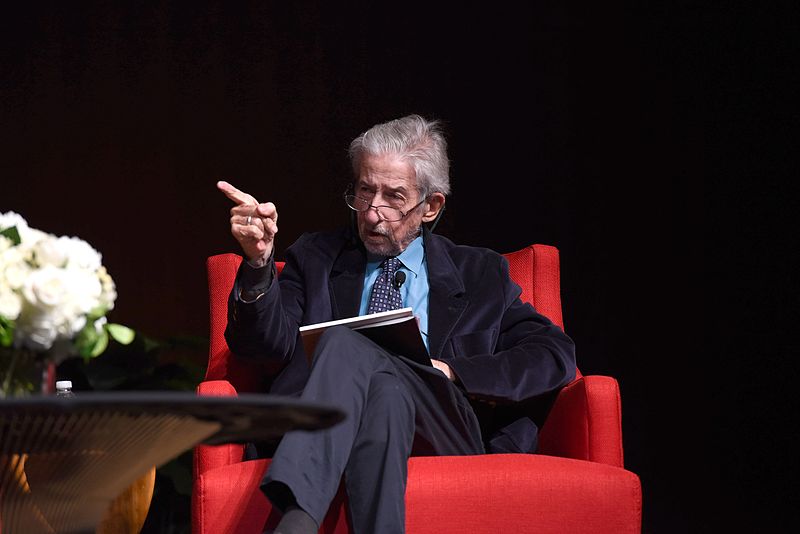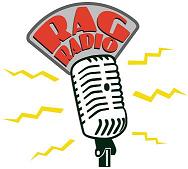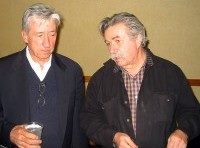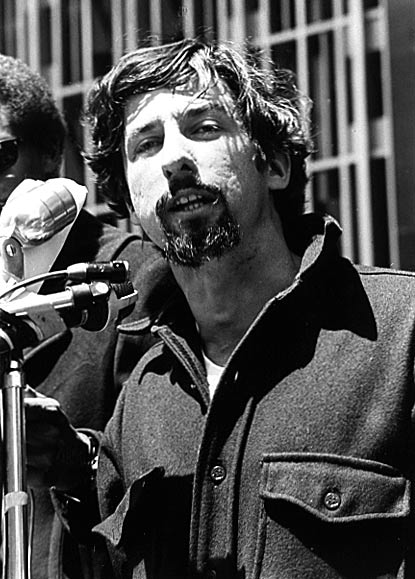He inspired me and many others to go to the battlegrounds and ‘put our bodies on the line.’

Tom Hayden speaks on the “War at Home” panel at Vietnam War Summit, LBJ Library in Austin, April 27, 2016. Photo by Jay Godwin / Wikimedia Commons.
REMEMBERING TOM HAYDEN
 Peace activist and spiritual leader Rabbi Arthur Waskow and activist and SDS vet Carl Davidson, joined Thorne Dreyer on Rag Radio, Friday, Oct. 28, 2016, 2-3 p.m. (CT), to discuss the life and legacy of Tom Hayden. Listen to the podcast here:
Peace activist and spiritual leader Rabbi Arthur Waskow and activist and SDS vet Carl Davidson, joined Thorne Dreyer on Rag Radio, Friday, Oct. 28, 2016, 2-3 p.m. (CT), to discuss the life and legacy of Tom Hayden. Listen to the podcast here:
Peace and justice activist Tom Hayden, founding spirit of SDS, principal author of the Port Huron Statement, and arguably the most influential figure in the Sixties New Left, died Sunday, October 23, 2016, in Santa Monica, California, at the age of 76.
Tom was a dear friend and colleague: a frequent contributor to The Rag Blog, a regular guest on Rag Radio, and a strong supporter of all our efforts.
This is one of several tributes to Tom Hayden we are publishing on The Rag Blog.
I got the news as soon as I awoke Monday. Even though I knew he was seriously ill, it still came as a shock. It seemed too soon, still too much to do, and too many things I would still like to hear him speak and write about, but now would be unspoken and unwritten. Tom was a comrade in our same organization, Students for a Democratic Society, and in the same battles for peace and justice before I got to know him well enough to be among those he called his friends.
My first indirect contact with him was through typewritten mimeographed pages stapled together in an SDS pamphlet that sold for 10 cents. These were his writings as a student journalist and activist from the front lines of the freedom struggle in Mississippi and Georgia.
We also got deeper messages about commitment and physical courage.
In addition to his accounts of vivid battles in well-written prose, we also got other deeper messages about commitment and physical courage. It was not enough for us just to hold good opinions about social and political matters. We had to be engaged, body and soul, willing to be, as Tom was, on the receiving end of a billy club in Mississippi or the insides of a Georgia jail. He inspired me and many others to go to these battlegrounds ourselves and “put our bodies on the line.”
Soon Tom had also written, together with Carl Wittman, another mimeographed SDS pamphlet I read, entitled “An Inter-racial Movement of the Poor.” It was about the need to get beyond the campuses and organize among those most in need, into community-based organizations in the inner cities. Again indirectly, he inspired me to visit an SDS community organizing project in Cleveland on my way back to the University of Nebraska via hitchhiking.
What I learned inspired our SDS chapter in Lincoln not only to get our own mimeo machine, but to rent an “SDS house” in the midst of Lincoln’s small Black and Native American neighborhood, called “T-Town” after 22nd and T street. Hanging out on our porch there with our neighbors one afternoon, we got the news that James Meredith had been shot attempting a “March against Fear” through Mississippi. Within hours, we had two carloads, students and community folks, off to Memphis to continue the March.
Those experiences were powerful and
changed my life.
Those experiences were powerful and changed my life. A few months later I found myself elected to the SDS national office in Chicago.
At the national office, I learned more about Hayden, this time in regular print. We distributed, of course, the nicely printed Port Huron Statement. One day I was thumbing through it, and commented to Greg Calvert, “This is really well done, especially the beginning, even if the last half is a bit reformist for today.” Greg laughed, “that’s Hayden’s writing. The beginning is all his, and that’s what turns everyone on.”
My job at the national office was to focus on “internal education” and it meant visiting chapters, and over two years I must have visited 150 of them. This brings me to my next way of knowing Tom, through black-and-white celluloid film. We had very little money, so to travel, I took literature to sell and films to show along the way, at each stop making enough to get to the next.
One of the films, about 30 minutes long, was called Troublemakers. It was about our community project in Newark, and featured Tom, among others. We got to see him at work, bringing people together, asking lots of questions, drawing people out to feel comfortable with their own ideas, and their own potential for political power. Tom was always laid back, non-domineering, but still serving as a catalyst, working toward united action. It was a good model for those of us who aspired to be organizers.
He had raised a ruckus by going ‘behind enemy lines’ to North Vietnam.
My next knowledge of Tom was through the newspapers. He had raised a ruckus by joining Herbert Aptheker of the Communist Party and Staughton Lynd, a pacifist Yale history professor, in going “behind enemy lines” to North Vietnam, to make direct contact between the U.S. peace movement and “the other side” in Hanoi.
Most of us SDSers had years before decided that justice was on the side of the Vietnamese, so we were quite pleased with the trip, even as the news pundits were scandalized. We felt Tom had hit one out of the park with this move. In fact, it changed his life, since on his return he shifted away from local organizing among the poor to the larger and more intense struggles that were developing around the escalating Vietnam war.
By 1968 I finally got together with Tom directly. We met in, of all places, the famous round bar at the top of the Havana Libre Hotel, formerly the Hilton, made famous in pre-revolution days with the likes of George Raft, Humphrey Bogart, and others of their pack hanging out there. We were both delegates to the international Cultural Congress of Havana, and others at the bar those nights that I met were Andre Gorz from France and Robin Blackburn of New Left Review in the UK.
Then one night that week Tom and I got a summons. Together with antiwar leader Dave Dellinger, we were to be whisked off to a private meeting with Fidel Castro. We entered a car with several soldiers and were treated to a topsy-turvy high-speed ride around the city, finally ending up at an ordinary suburban house, but with soldiers with machine guns in the shadows. “Sorry for the security measures,” one of the soldiers told us, “but due to your CIA, we still have to practice the clandestine ways.”
Inside were Fidel, and two of his top people,
‘Red Beard’ and ‘The Doctor.’
Inside were Fidel, and two of his top people, “Red Beard” and “The Doctor,” an official who had trained at Harvard. They said little, but helped Fidel with translation, even though Fidel understood English rather well. We discussed everything under the sun for a few hours, with Tom and Dave giving Fidel a full account of the antiwar struggle. We asked about the fate of Che Guevara and Regis DeBray, and Fidel wanted more of our opinions of various political figures in Congress.
After those intense days, I wasn’t in direct contact with Tom for some time. He had continued his antiwar work through the battles in Chicago’s Grant Park in 1968 and the ensuing trial, then with wife Jane Fonda, their tireless efforts in the Indochina Peace campaign and the GI coffee house movement. Finally he entered electoral politics, eventually becoming a state senator in California.
I went a different direction, through years at The Guardian then into the 1970s “party-building” movement and several trips to China, finally settling in Chicago, working in the election campaigns of Harold Washington and Jesse Jackson, among other projects, especially antiwar work.
As the war in Iraq unfolded and our movement was growing around the state, we decided on a statewide meeting in Champaign-Urbana. I offered to arrange for Tom to be the keynote speaker — he had just written a book on Iraq — and he agreed, and did an excellent job.
In that speech, Tom made a deep lesson click in my mind. Wars end in three ways: when the streets become ungovernable, when the soldiers refuse to fight, and when a Congressional majority refuses to pay for it. Pick all three, any two, or any one of them. But get to work. It’s not crowded up front.
Members of the Campus Greens were at that conference, and I had given them some space in my office for their national work on the Nader campaign. A few months later, they invited both Tom and me to speak at their national convention at the university in Lawrence, Kansas. My talk was in a small group workshop, but with about 50 people, with Tom listening in. It went well, with Tom later telling me “You have a great way with stories.”
Prose and poetry rolled off his tongue and his audience was spellbound and inspired.
Tom spoke to a full auditorium the next day. I sat in in the back, taking in all in. He was in great form. Both prose and poetry rolled off his tongue for over an hour, covering everything, and his audience was both spellbound and inspired. It was vintage Hayden, even through the long Q and A session.
During my electoral and antiwar work in Chicago, we helped a young guy named Barack Obama get elected to the statehouse, then got him to speak at our antiwar rallies and elected to the U.S. Senate. After a major successful antiwar rally in 2007, I decided to move back to the Pittsburgh area where I grew up, and continue to organize there.
Hayden knew about our antiwar work with Obama, and one day he called me up, inviting me to be webmaster for an independent media project, loosely connected to the Progressive Democrats of America, called Progressives for Obama. By this time, I had moved from backing Kucinich to backing Obama, so I readily agreed.
The next year was some of my most intense work with Tom, with weekly, even daily, phone calls, and two trips to Los Angeles. The website project was both controversial on the left and quite successful. Once the results were in, I recall Tom tearing up at a TV shot of Michelle and the kids. “Watching them playing on the White House lawn. Such a beautiful sight I never thought I’d see.”
We both knew the fight was far from over.
We both knew the fight was far from over. We now simply had tough problems on another level. Tom focused on writing about the danger of sectarian warfare breaking out between Sunni and Shia in Iraq and elsewhere. I focused on building PDA and the Congressional Progressive Caucus as groups that would give us some clout at the base and in Congress.
“You’re always the organizer, Carl,” he noted once. It was only partly true. I knew the importance of organization, but I did better work as a teacher and propagandist, aspiring to be one of Gramsci’s “organic intellectuals” and “permanent persuaders.” And Tom helped me to finally get one of my articles placed in The Huffington Post.
Some people in my corner of the left had a lot of criticisms of Tom, most superficial, like marrying Fonda, and others more serious, related to his electoral work. But I had a different take, and I once told Tom it was the reason why we got along. I surmised that he was never really a Marxist, and hence it made no sense to me to find fault with him over not upholding this or that Marxist view.
Tom laughed that I was one of the hard
Marxists he got along with.
Instead, I thought he was simply a consistent radical democrat, a left populist fully in the American grain, and he was quite good at it. Tom laughed and agreed, adding that I was one of the hard Marxists he got along with, because I saw an open future, not dogma, and was willing to get outside the box, like with our 1967 “theory of the new working class.”
Tom and I talked about other things we shared, like both being raised Catholic. He told me he never learned until later in life why his middle name was Emmet, after the Irish patriot. Due to the suffocating nature of the 1950s, his parents had never told him why they picked this name, due to fear. I told him my Catholicism was from the family’s German side, and my Irish ancestors were largely Orangemen from Ulster. We both agreed that if we had the Berrigan brothers as our parish priests, we might still be deeply tied to the Church.
With that in mind, some on the left were scornful of Tom’s visit to the casket of Robert Kennedy, where he let the tears flow. For me, I understood exactly where it was coming from, and it was a tribute to Tom’s humanity. He inspired a militant minority, but he was also never afraid of uniting a progressive majority, and even holding out hope for common decency for a few at the top.
If those hopes failed to come through, or were answered only in small part, it was not due to the radical authenticity of the man who held them. He will be missed, and not just for a short time. He made many waves that will rise and fall for some time to come.
Read more articles by Carl Davidson on The Rag Blog and listen to Thorne Dreyer’s five Rag Radio interviews with Carl.
[Carl Davidson, a longtime activist and author, is a member of the national boards of Committees of Correspondence for Democracy and Socialism and Solidarity Economy Network. He is active with Progressive Democrats of America, and is a member of Local 3657 of the United Steel Workers. A former vice-president and national secretary of SDS and news editor at the Guardian (U.S.), Carl lives in Western Pennsylvania.]
- Find articles by and about Tom Hayden on The Rag Blog.
- Listen to Thorne Dreyer’s interviews with Tom Hayden on Rag Radio.
- Read “Thorne Dreyer: As Port Huron Turns 50,” at Tom Hayden’s Democracy Journal, and at Truthout.



















